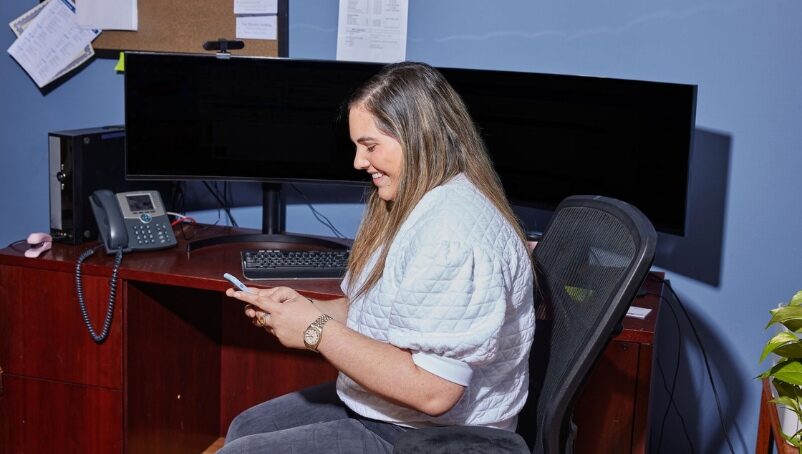What is a sole proprietorship?
A sole proprietorship is an unincorporated business one person owns. It’s the simplest form of business you can have. It doesn’t require formal paperwork, registration or legal structure to start. You can simply set up shop and call yourself a sole proprietor.
Because a separate business or trade name isn’t necessary, many sole proprietors operate under their own names for convenience’s sake. Common examples of sole proprietorships can include many small businesses, such as art studios, freelance writers, IT consultants or bookkeepers.
How to pay yourself as a sole proprietor
First, you’ll want to set up a separate business bank account before you pay yourself. Separating your business and personal finances makes financial tasks much easier to manage.
As a sole proprietor, you can take money out of your business to pay yourself any time you want. The profits your company earns is your pay. Profit is what’s left over from your revenue after subtracting expenses.
There are many ways to get the money from your business account to your personal account. Two common ways to pay yourself are to:
- Write yourself a check from your business bank account
- Schedule a bank-to-bank transfer (known as an ACH transfer)
Both options are considered an owner’s draw, and it’s the way most sole proprietors pay themselves. An owner’s draw simply means you’ll take money out of your business for personal use.
Sole proprietor payroll doesn’t exist. This is because you are your own payroll. In other words, you don’t have a middle man involved when you pay yourself. Instead, your money goes directly into your bank account and is yours to spend as you see fit.
You don’t have to draw the same amount each time or do it at regular intervals. When and how much to transfer to yourself is up to you. Most people prefer to make a draw every two weeks or once a month. Whichever schedule you choose, keep accurate financial records. Consider using accounting software to prepare financial statements, which can come in handy at tax time.
A note about taxes: You don’t pay income taxes or Social Security and Medicare taxes when you do a draw. However, the money is still subject to taxes. A sole proprietor doesn’t issue themself a W2. Instead, you’ll file a Form 1040 Schedule C with the IRS when you submit your personal income tax return.
How much to pay yourself
One of the most challenging parts of being a sole proprietor is deciding how much to pay yourself from your business. It comes down to how much profit your company expects to make and how often you want to take an owner’s draw.
First, know that you don’t have to pay yourself right away. You can leave the funds in your business until you build up a healthy cash flow. Before you pay yourself, make provisions to cover:
- Regular business expenses (leases, equipment, fees, inventory and quarterly estimated tax payments)
- Irregular business expenses (renovations, improvements and expansions)
- Cash reserves
If you have the basics covered, you can move to the next step of figuring out how much to pay yourself.
Bare minimum method
The bare minimum method is precisely what it sounds like: You pay yourself only enough to meet your basic living expenses, such as mortgage payments, grocery bills, utilities and other necessary costs.
Paying yourself just enough to survive (with no frills) can help your business get off the ground in the beginning. However, it isn’t recommended for the long haul.
Your business should be profitable enough to pay you reasonable compensation. If it isn’t turning a profit after a few years, consider reassessing your business.
Marketplace worth
You can choose to pay yourself what you’re worth from the beginning, or transition into this method after your business grows and stabilizes. Paying yourself what you’re worth is often easier in the long run. It keeps business expenses constant, so you don’t need to readjust calculations based on a higher owner paycheck.
To figure out your marketplace worth, research what other business owners in your industry earn. You can talk to other small business owners and research your industry online to determine a reasonable amount.
Quarterly bonuses
You may want to pay yourself quarterly bonuses, especially if you’re paying yourself the bare minimum. Calculate the company’s profitability each quarter to ensure it’s showing steady profits. Then, transfer a percentage of the profits to yourself as an owner’s draw.
How much you choose is up to you. In the beginning, you might choose a lower percentage to leave more money in the business to support cash flow. However, you can increase the amount as your company grows.
Tax considerations
Taxes are an important piece of the sole proprietor puzzle. Since you don’t have an employer, you don’t have anyone to take taxes from your payments each time you draw money from the business. But you’re still responsible for paying them.
A sole proprietorship is a pass-through entity. The IRS considers you and your business to be the same entity, and all the profits “pass through” your business and go directly to you. That means you must pay taxes on the profits, not just what you take out as an owner’s draw.
As a business owner, you’re liable for:
- Federal income tax
- State income tax (depending on your state)
- Self-employment tax
How much you pay in income taxes depends on your tax filing status, income, self-employed deductions and credits. Not all states have an income tax. Alaska, Florida, Nevada, South Dakota, Texas, Washington and Wyoming are tax-free states. New Hampshire and Tennessee tax for dividend and interest income, but not for earned income.
Self-employment tax is a Social Security and Medicare tax that people who work for themselves must pay.
The IRS generally requires all self-employed individuals, including sole proprietors, to file and pay estimated quarterly taxes if they expect to owe $1,000 or more when filing their annual return. Use Form 1040-ES to figure the estimated tax amount due each quarter. If you aren’t sure, contact an accounting professional for help with sole proprietorship taxes.






